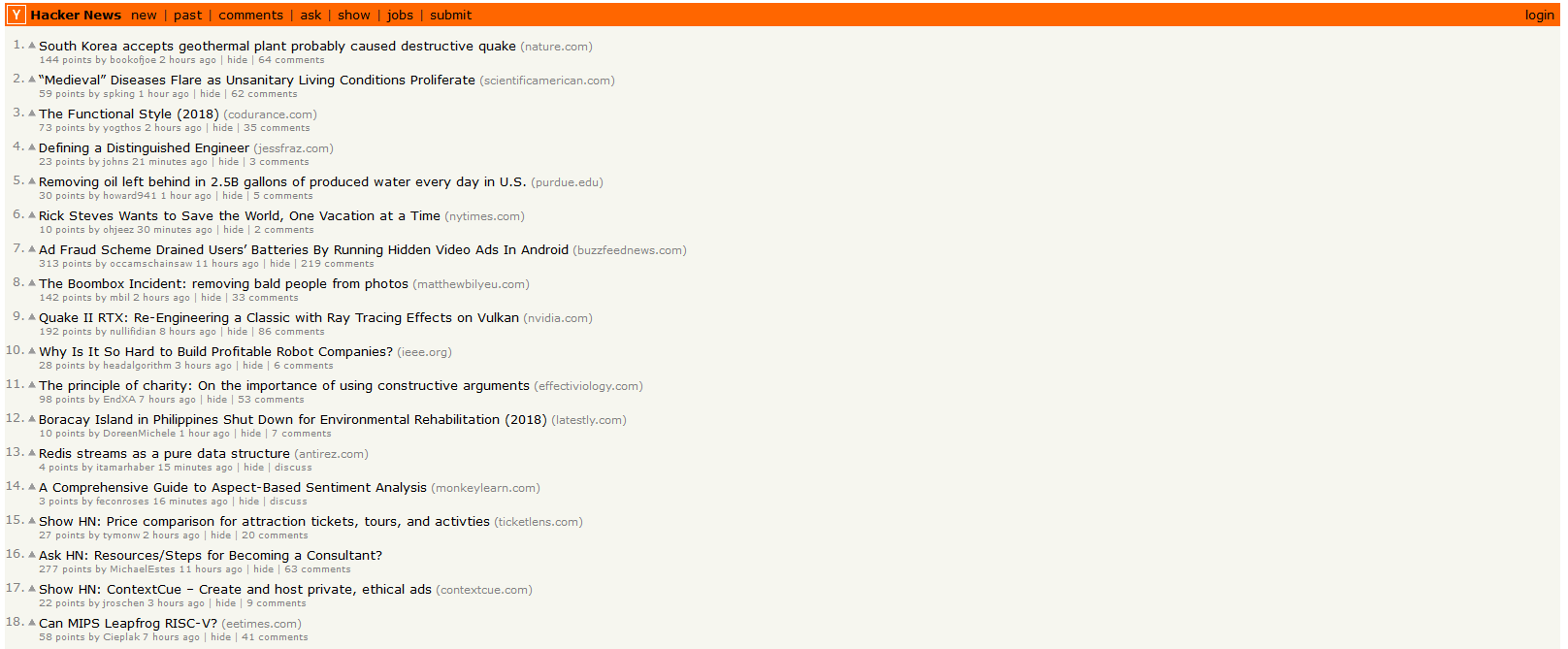So I finally got to it. After finishing my Msc.Thesis and relaxing for a couple of months in my sunny home country of Portugal, I built a 'big' project. Here are some words about it.
This is a rundown of some of the tools I used. (by no means a tutorial!!)
1.The idea
I keep a lot of great ideas for giant technology companies in my notes app. But this time, the goal was just to build something from scratch.
I'm a big fan of hackernews and I also always felt that in Portugal, there are not many "community focused" websites. Therefore, I decided to create a hackernews clone for Portuguese hackers.

Alright, that being said. What tools did I use to build it?
2.The technology
2.1.Python
I would be lying if I told you python was not my favorite language. If I can build it, I prefer to build it with python. For some years now, I have been totally embedded in the language's ecosystem. From data science projects, web development, devops, guis, or just scripts that help people around me. I think python is big, and it's here to stay. For me, it's a bit like writing poetry.
fruits = ["apples", "oranges", "bananas"]
for fruit in fruits:
print(f"I love {fruit}!") # f strings are like crack.
So python 3 was set. But how to build a hackernews clone using it?
2.2.Flask
I have experimented with various python web frameworks such as django or pyramid, but in my opinion, nothing quite compares to flask. The sheer simplicity of it is just mind boggling.
For example, the snippet bellow, will give you a page with "Hello world" in it. Now isn't that awesome?
from flask import Flask
app = Flask(__name__)
@app.route("/")
def hello():
return "Hello World!"
This is just a small snipped of the syntax of flask. This actually got more complicated than this, but in flask, the general idea is that each function (in this case function hello), returns some HTML (in this case, the string "Hello World"").
OK, you made some pages with some functions, what about data, and models?
2.3.SQLAlchemy
In order to make things work in our website, I had to come up with a way of managing all of the posts, users, comments, and votes. This "system" would have to both interact with my code, and at the same time, with a database (because we want to save information).
There are a bunch of ways of doing this, but I decided to use SQL Alchemy. The basic idea is that you define a "model" in your code that can automatically interact with a database.
Here is an example of the User class:
class User(UserMixin, db.Model):
id = db.Column(db.Integer, primary_key=True)
username = db.Column(db.String(64), index=True, unique=True)
email = db.Column(db.String(120), index=True, unique=True)
password_hash = db.Column(db.String(128))
posts = db.relationship("Post", backref="author", lazy="dynamic")
comments = db.relationship("Comment", backref="author", lazy="dynamic")
about_me = db.Column(db.String(140))
karma = db.Column(db.Integer, default=1)
timestamp = db.Column(db.DateTime, index=True, default=datetime.utcnow())
This will create a User table in our SQL database and allow us, through python code, to interact with the model.
Browse all the models I created here.
2.4.Docker
After building a website in flask that worked in my local machine, I had to put it onto the web. As this was a learning process I decided to understand what all the fuss around docker was about. What is docker? It is basically a "mini" virtual machine. So mini, that you can run multiple on the same real virtual machine. Each mini virtual machine is called a container.
For this process, I had to create two containers. One for my flask application, and one for my database. (why two and not one is a story for another post).
But how do you do that? Well, the simple principle is that you create something called a Dockerfile which is a set of instructions docker follows, in order to create a container. Here is an example:
FROM python:3.7.1-alpine
COPY requirements.txt requirements.txt
RUN python -m venv venv
RUN venv/bin/pip install --upgrade pip
RUN venv/bin/pip install -r requirements.txt
RUN venv/bin/pip install gunicorn==19.8.1
RUN venv/bin/pip install pymysql
COPY app app
COPY migrations migrations
COPY dev.py config.py boot.sh ./
RUN chmod +x boot.sh
ENV FLASK_APP dev.py
RUN chown -R devtuga:devtuga ./
EXPOSE 5000
ENTRYPOINT ["./boot.sh"]
After creating these instructions and running them, we basically can have two containers running, here are mine:
» sudo docker ps
CONTAINER ID IMAGE COMMAND CREATED STATUS PORTS NAMES
7baab35c09b7 devtuga:latest "./boot.sh" 4 hours ago Up 4 hours 0.0.0.0:80->5000/tcp devtuga
89348e814f92 mysql/mysql-server:5.7 "/entrypoint.sh mysq…" 30 hours ago Up 30 hours (healthy) 3306/tcp, 33060/tcp mysql
3.The process
I took a long time getting everything up and running (about a month according to the GitHub repository) but I had a lot of fun, and frustration also. In the end, I got a much better understanding of how real web applications work. So it was definitely worth it.
4.The Result
So here's the result after some long hours of frustrating but very fun work.
